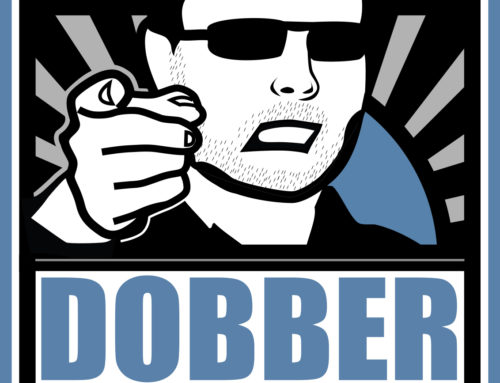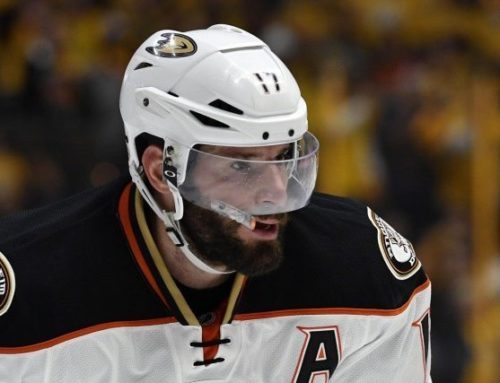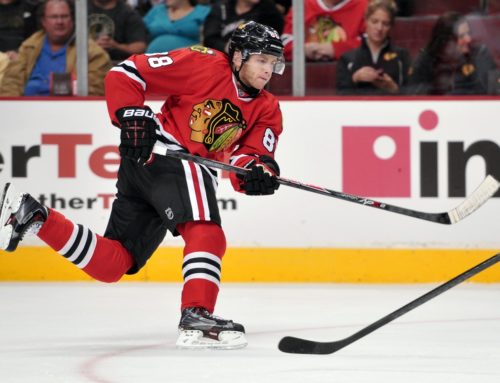The Origin of Species
Justin Goldman
2009-01-26

An interesting goalie stat was thrown my way last week regarding NCAA products and the surprising number of them making it to the NHL and performing quite well. Below are the current goalies on an NHL roster based by their league of origin:
INT'L – 18 NCAA – 14 QMJHL – 12 OHL – 11 WESTERN – 8
At first glance, that impressive number 18 proves what we already knew – there’s a steady rise of European and Scandinavian goalie products over the last decade. Goalies like Miikka Kiprusoff, Niklas Backstrom and Vesa Toskala have not only made their mark since 2000, they have changed the entire world of overseas scouting.
But before this big international push arrived, it has been the Canadian leagues (QMJHL, OHL, WHL) dominating the goalie position at the NHL level. This all started with the advent of Patrick Roy's butterfly style, which single-handedly created a new breed of netminders.
Lateral movement was in and that meant a steady rise in the use of the butterfly style. It was refined and mastered by goalies like Martin Brodeur, Roberto Luongo, Jean-Sebastian Giguere and Marc-Andre Fleury. And to this very day, the butterfly style continues to dominate the goaltending position.
Lately there have been minor deviations of the style also making their mark, including the Quebec butterfly, hybrid and flybrid styles. These styles stretched southward to the United States, which actually lent a hand in some very successful NCAA products making it to the NHL. But what makes the Canadian-league goalies (in particular the QMJHL) so much more successful when compared to NCAA goalies?
Let’s start with a simple fact that benefits both sides: In the 2008 Stanley Cup Playoffs, five teams started with just a QMJHL product in goal and the NCAA surprisingly had three products labeled their starter – Tim Thomas, Marty Turco and Dan Ellis.
Thanks to the play of Ellis, Turco and Miller, you have to give credit where credit is due. The NCAA should no longer be labeled as an inferior "developmental league" when it comes to others. But there are still some major structural reasons why NCAA goalies will always play second fiddle to Europe or Canada and they come from the way the leagues are structured.
First of all, the NCAA season is only 32 games long (and played only on weekends). This is a stark difference to the 60+ game schedules seen in Canadian leagues. At this tender age of 16-20, the more a goalie gets to play, the quicker their game can develop. More games also equals more experience and more experience equals faster progression, so the fact that NCAA goalies only play a percentage of what Canadian goalies play turns into a major factor in a Canadian-league goalie progressing faster.
There is a minor upside to the NCAA schedule, however. Practices are often two hours long, as opposed to the routine 60-minute practices seen in Canadian leagues. As a former college goalie, I can speak from experience when saying that two hours is much more productive than one. Having 60 minutes to spend with a goalie coach is not only a boost of confidence, it’s a better opportunity to fix little problems and improve weak areas. Those things can barely be achieved with 15-20 minutes of practice time.
Secondly, NCAA goalies begin their tenure at age 18 or 19, while Canadian league goalies begin at 16 or 17. The cut-off age for North American players to be eligible for the NHL Entry Draft is 20 and because of that, many NCAA goalies seem like “late bloomers” compared to their Canadian league counterparts. That is why so few NCAA goalies end up being drafted. If they are, it’s usually in the later rounds.
Only Rick DiPietro and Ellis were selected in the top 100 picks of an NHL Entry Draft. Ellis was chosen #60 in the 2000 Entry Draft and Turco was chosen #124 back in 1994. Thomas was selected #217 in the same draft as Turco, but had to spend four seasons in Finland and Sweden before breaking the NHL barrier in 2002-03. Then Miller was chose in the 1999 Entry Draft but not until the 138th pick rolled around.
The big exception to this was DiPietro, who played for the USJDP for two seasons, then one season for Boston University before turning pro. He was chosen #1 overall in the 2000 NHL Entry Draft and despite some stretches of great play so far, he still hasn’t turned out to be the Islanders’ savior just yet.
So those two major structural differences between the NCAA and Canadian leagues is a big reason why you can count on finding the best goalies in the QMJHL as opposed to the NCAA. But considering all of the disadvantages that NCAA goalies go through, yes, it's quite surprising and pretty impressive that 14 of them are currently in the NHL ranks.
Feel free to dig much deeper with all of these comparisons and weigh the stats against each other. But that will only leave you with more proof that the cream of the crop for goalies come from Canada and Europe. But honestly, great goalies come from everywhere, and ultimately it has nothing to do with their pedigree or origin. It has to do with the fire in their hearts and the strength of their minds.
Next week we take an in-depth look at two NHL goalies with very different backgrounds – Brian Elliott and Steve Mason. Mason originated from the OHL and Elliott originated from the NCAA. Even though Elliott happens to be Canadian, it’s still a great case study on the analysis of NCAA vs. Canadian goalies.





 BUF
BUF N.J
N.J PHI
PHI MIN
MIN FLA
FLA WPG
WPG VAN
VAN TOR
TOR CGY
CGY STL
STL